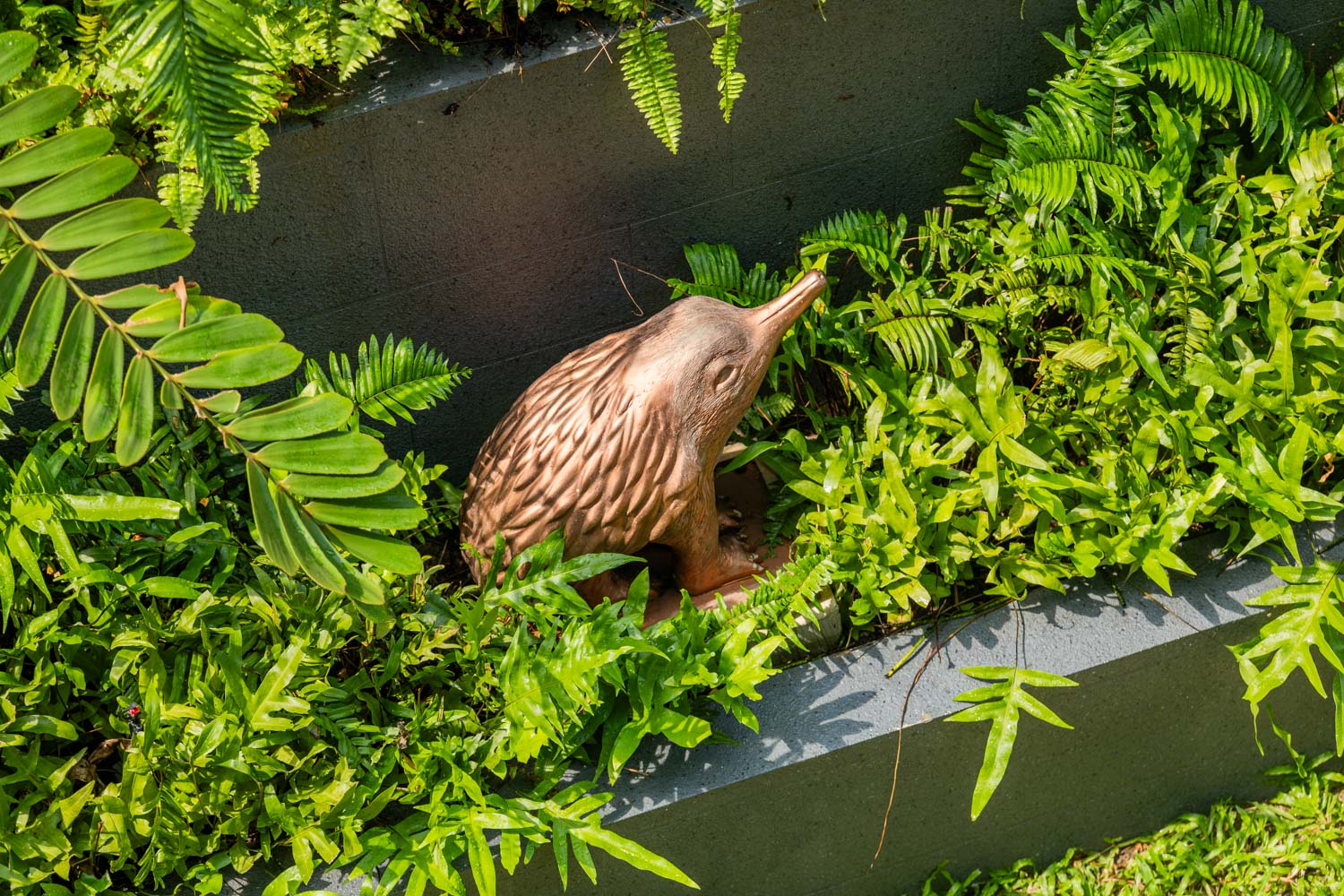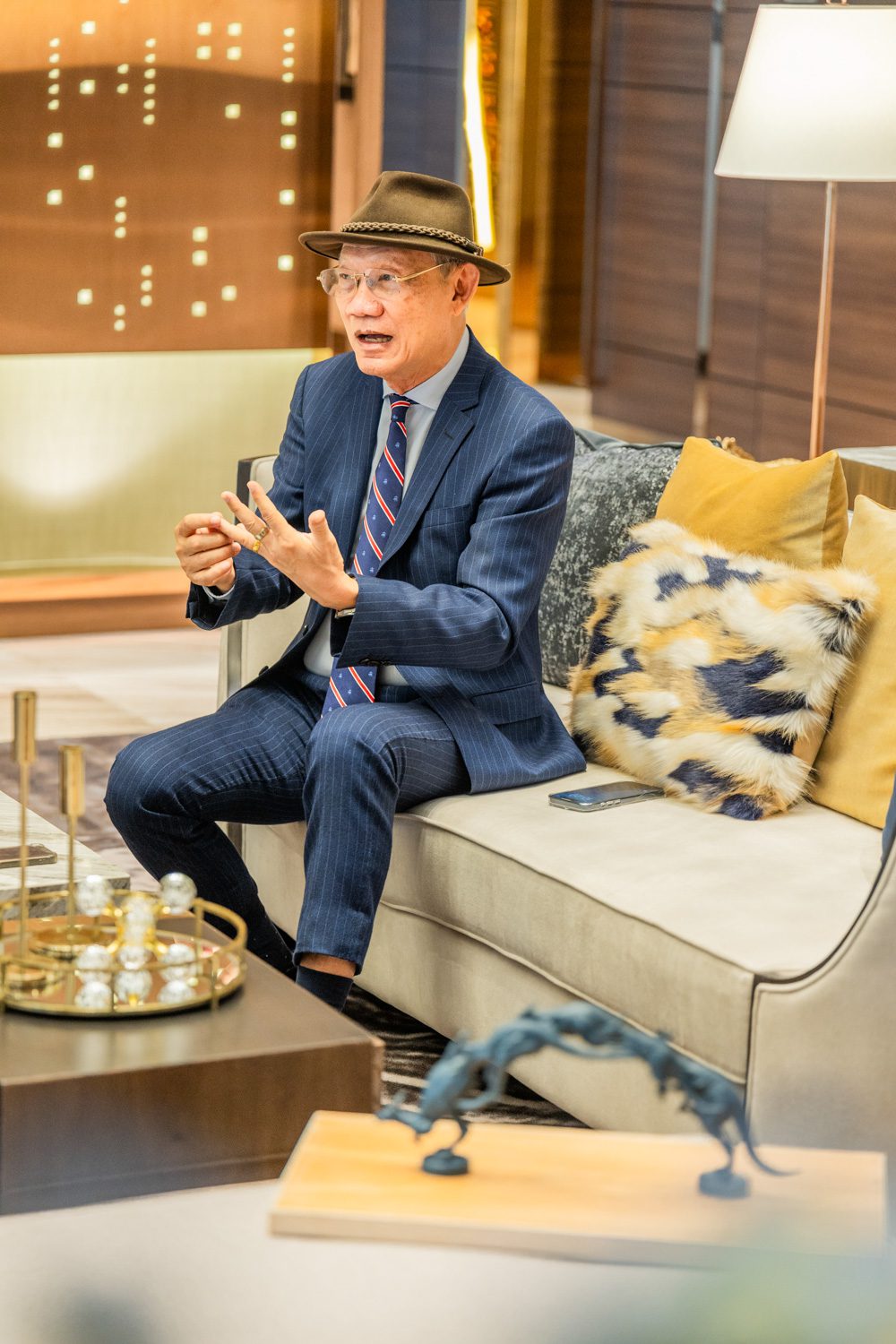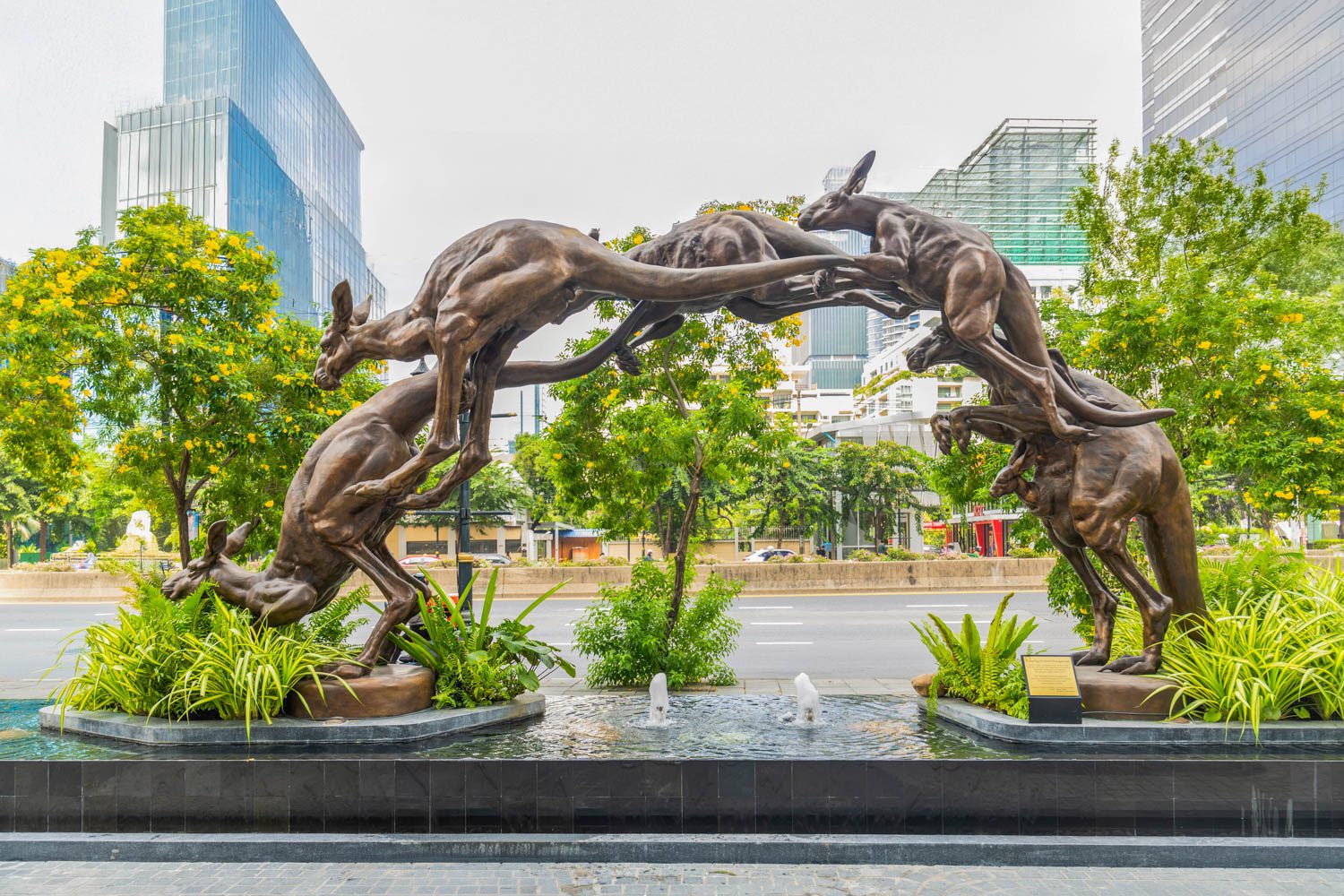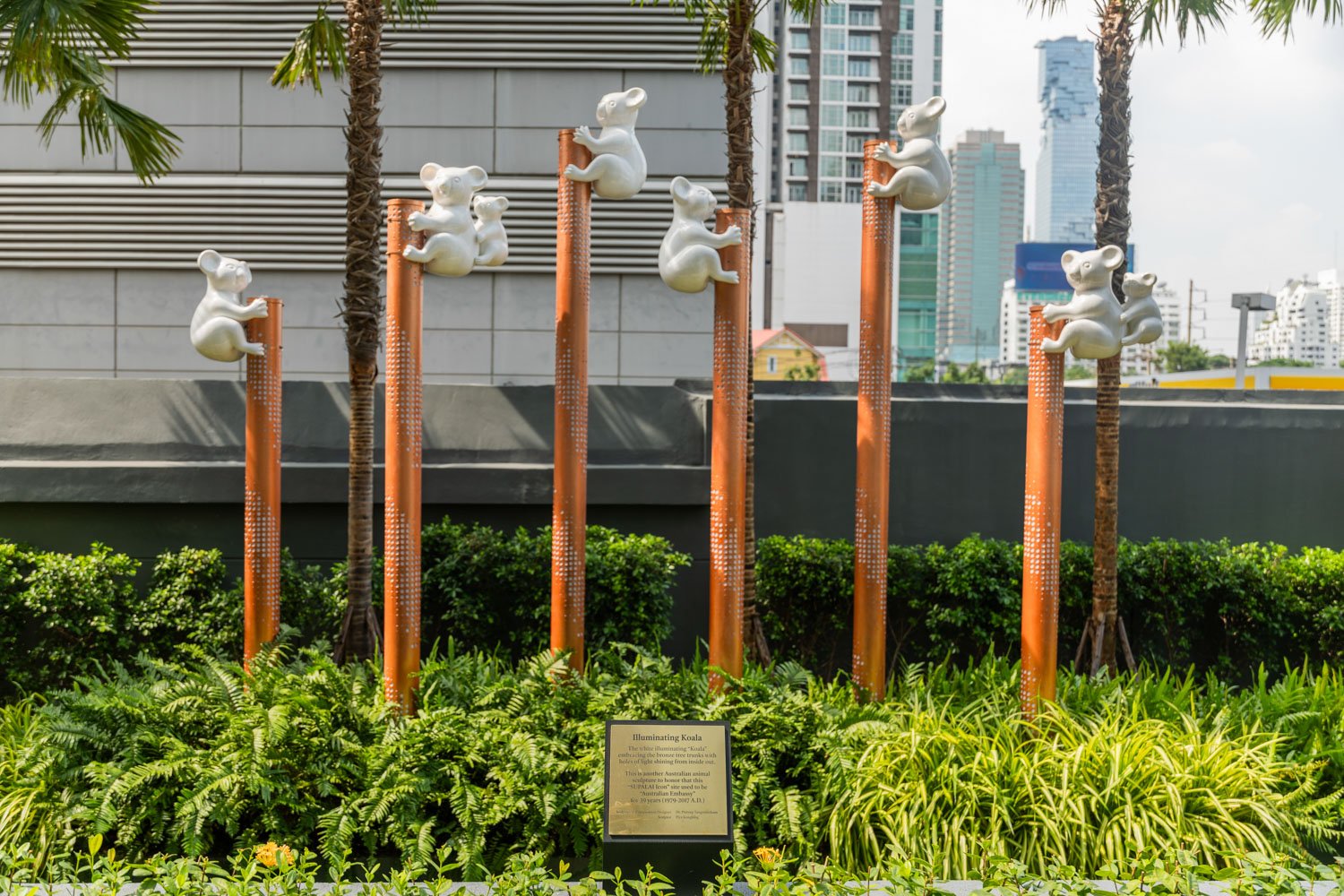ART4D SPOKE WITH DR. PRATEEP TANGMATITHAM ABOUT THE DESIGN OF THE AUSTRALIAN-INSPIRED SCULPTURES AT SUPALAI ICON SATHORN
TEXT: CHIWIN LAOKETKIT
PHOTO: SUKIT SUDNAN
(For Thai, press here)
Many people might remember Sathorn Road as the former location of the Australian Embassy in Thailand—a sprawling 8-rai property (approximately 12,800 square meters) and a familiar landmark with its distinctive mustard-yellow hue. Architectural enthusiasts may recall the site not just for its diplomatic history but as a canvas for the celebrated architect Ken Woolley, with M.L. Tridhosyuth Devakul serving as an advisor. After the embassy, which had operated there for over 39 years, relocated, this prime piece of real estate was transformed into the vibrant Supalai Icon Sathorn project. Under the visionary leadership of Dr. Prateep Tangmatitham, the architect and owner of Supalai, the project aimed to continue the legacy by incorporating Australian elements connected to the area’s history and enhancing the landscape of the new development with sculptures that echo the continent’s distinct fauna, delighting those who visit the building.


Emu

Echidna

Platypus
“When I think of Australia, its distinctive wildlife comes to mind,” remarked Dr. Prateep. “As a continent isolated from other landmasses, Australia’s fauna is unlike that of any other country—kangaroos, koalas, emus, platypuses, echidnas. This became the starting point for the design of the sculptures I chose to install at Supalai Icon Sathorn.”

Recently, in an interview with art4d, Dr. Prateep shared insights from the past 11 years of expanding Supalai’s business in Australia, where he observed numerous kangaroo sculptures. Most of these depict parent kangaroos standing still with their young. In contrast, he envisioned a dynamic design of five kangaroos arranged in a connected sequence, leaping in poses that complement the semi-circular curved roof of the Supalai project.
“These kangaroos are jumping over a fountain, symbolizing overcoming obstacles—we must always strive for something better,” Dr. Prateep explained. He added a subtle detail that might go unnoticed: one of the kangaroos discreetly carries a joey in its pouch, adding a touch of whimsy to the piece. This sculpture, titled ‘The Leaping–Forward Kangaroos,’ therefore, actually features six bronze sculptures capturing kangaroos in various stages of motion.

The Leaping–Forward Kangaroos
Furthermore, in the garden areas adjacent to and behind the building— large trees and the green legacy of the former embassy grounds have been beautifully preserved. Dr. Prateep recounted that during his studies in Housing in the United States, he recognized how architecture can shape human behavior. In the U.S., homes often feature quiet, warm, and safe backyard gardens. Inspired by this ethos, Dr. Prateep integrated several animal sculptures into the greenery of Supalai Icon Sathorn’s garden. He personally designed another sculpture featuring koalas nestled in the crooks of trees.
“I wanted the koalas to radiate light, so I focused on details in the fiberglass material to make them appear charming, with a soft and rounded look. The koalas must climb trees, which led us to create an environment with real and artificial trees, the latter made of copper to allow light to emanate from within. This resulted in what is now known as ‘The Illuminating Koalas,” Dr. Prateep elaborated.

The Illuminating Koalas

The Illuminating Koalas
In this most recent conversation with art4d, when asked about his future goals in both architectural and sculptural design, Dr. Prateep revealed a grand vision.
“I have envisioned a significant project for the culmination of my career: the establishment of Prateep’s Vision Art Museum. This institution would serve as a comprehensive center for learning, covering architecture, urban planning, and a broad spectrum of design disciplines including painting, sculpture, photography, and various forms of visual arts, all intricately linked to the human spirit and experience.”
“The museum itself is intended to be an architectural masterpiece that people can interact with, resembling a grand sculpture with surfaces that are simultaneously smooth, rough, and complexly multi-dimensional. Some areas may even integrate sound to enhance the sensory experience. An additional focus of my vision is to create engaging spaces for children and youth. By allowing young individuals to explore the intersections of art and science—such as through techniques of Optical Illusion Arts that challenge perceptions of lines and shapes—the aim is to nurture their minds, promoting a sense of balance, happiness, and a forward-thinking outlook. My aspiration is to construct a grand museum that is not only expansive but also widely accessible, establishing a vital hub for nurturing and showcasing artistic talents in diverse fields, a resource that Thailand profoundly needs.”


 Dr. Prateep Tangmatitham
Dr. Prateep Tangmatitham